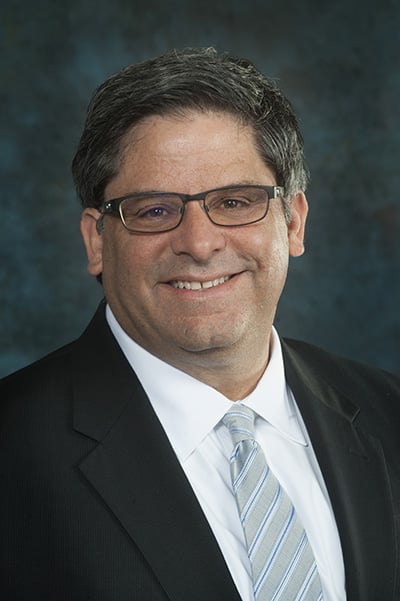Sen. John Barrasso (R-WY) opens the discussion.
In June 2018, the Senate Environment and Public Works Committee held a hearing in Washing D.C. to discuss the future of autonomous vehicle and transportation infrastructure. Chairman of the U.S. Senate Committee on Environment and Public Works, Senator Barrasso’s opening statement included, “New vehicle technologies offer many potential benefits and could transform the way that we view surface transportation all together”. He went on to say that, “Soon, elderly and disabled American’s, as well as those without a car of their own, may be able to travel via vehicle with greater ease and greater independence. Likewise, these innovations have great potential to reduce crashes and fatalities, to improve mobility and to increase the efficiency of the roadway system.”
Wy Dept. of Transport Director William Panos testifies at Senate hearing.
During the discussion that lasted an hour and a half, William Panos opening statement addresses some concerns looking to the future. He questions how autonomous vehicles will handle roadwork zones, and what are the signage and striping requirements. Panos also brings up, that enabling DSRC (Dedicated Short Range Communications) on long rural highways could be costly, so would there be an alternative, such as using cellular networks. He also mentions that the FHWA (Federal Highway Administration) announced a series of meetings to discuss autonomous vehicles and infrastructure and encouraged Congress to move forward with those meetings. WYDOT is currently testing DSRC on I-80.
Wyoming testing connected vehicles.
During the entire hearing, Wyoming was mentioned more times than Detroit. Probably because it’s one of only 3 States currently testing connected vehicles. The Wyoming Dept. of Transportation (WYDOT) runs a connected vehicle pilot program that includes Vehicle to Vehicle (V2V) communication, Vehicle to Infrastructure (V2I) communication and Infrastructure to Vehicle (I2V) to communication. The idea behind this is to ultimately improve safety by monitoring I-80 and alerting drivers of road conditions. Panos stated that in 2016, there were more than 1600 crashes on I-80, which resulted in 18 fatalities and 271 injuries. In December of 2016, I-80 was only fully open for 8 days.
“The Wyoming pilot program will test new safety technology, such as advanced forward collision warnings, to let travelers know of crashes ahead,” Panos said. “It will also provide immediate situational awareness warnings about weather alerts, speed restrictions, parking availability, and so forth; detailed and current work zone warnings; specialized spot weather impact warnings for ice, fog, and other hazards; and notifications from disabled vehicles.”
Connected vehicles, aren’t necessarily autonomous vehicles, Panos says, but people are driving cars increasingly equipped to able to receive DRSC data. In fact, over 100,000 DSRC equipped Toyota’s are currently on the road in Japan, according to automotive journalist Aaron Turpen of TorqueNews. Turpen’s article also states that Toyota and Lexus will have the technology in the U.S. by 2021.
The system was initially tested on WYDOT vehicles but has now expanded into fleet and freight vehicles.
Shailen Bhatt, President, and CEO of the Intelligent Transportation Society of America (ITS America) also testified at the hearing. “Advances in robotics, artificial intelligence, and wireless communications have inspired a race to make the next generation of mobility a reality. We are on the leading edge of a technology revolution that will define the way people, goods, and information move in the 21st century.” He also talks about maintenance of existing roads, bridges and other infrastructure is critical to being globally competitive.
Bhatt requests for long-term sustainable funding and that there be a Federal framework in place for consistency. “…so that we don’t have 50 different States (and then along with other cities and jurisdictions) developing their own standards when it comes to the operation of these vehicles.’
New York Commissioner says it should be up to the vehicle’s, not the city’s infrastructure.
New York Commissioner Trottenberg said, “Comments from industry suggest that cities need to get their infrastructure ready for the deployment of HAV’s (Highly Automated Vehicles). I would argue just the opposite.” she said. “New HAV technology should instead be prepared to operate safely and effectively in complex and urban environments, in snow, with traffic control officers managing an intersection when signals are out, and judgment is needed. Or when pavement conditions or lane markings are deteriorated.” Trottenberg says, “It’s simply not realistic or feasible to expect cities to overhaul their existing roadway infrastructure to accommodate a still, somewhat, unproven technology.”
Moving forward
Further discussion brought up points such as; a ‘vehicle eye test’ to make sure the vehicle knows what it is seeing is real, a rating system for cybersecurity of that similar to the NHTSA 5-star safety rating and a roadway classification system (that would determine the difference in roads from dirt roads to highways). There was also mention of a road usage charge to fund the new technology.
Be part of the Wyoming Connected Vehicle Program.
Contact
Ali Ragan, Wyoming Department of Transportation
(307) 777-2985 | [email protected]
Read our article on talking cars.
Sources:
“Autonomous Vehicles and Transportation Infrastructure .” C-SPAN.org | National Politics | History | Nonfiction Books, Senate Environment and Public Works Committee, 13 June 2018, www.c-span.org/video/?446972-1%2Fsenate-committee-examines-infrastructure-autonomous-vehicles.
Inama, Aimee. “WYDOT Director Bill Panos Addresses U.S. Senate Committee about Intelligent Driving Systems.” WYDOT, Wyoming Department of Transportation, 15 June 2018, www.dot.state.wy.us/news/wydot-director-bill-panos-addresses-us-senate-committee-about-intellig.
Turpen, Aaron. “Toyota to Have Connected Vehicle Technologies in the US by 2021.” New Atlas – New Technology & Science News, New Atlas, 19 Apr. 2018, newatlas.com/toyota-connected-vehicle-dsrc/54283/.
Read our article on talking cars.


Recent Comments